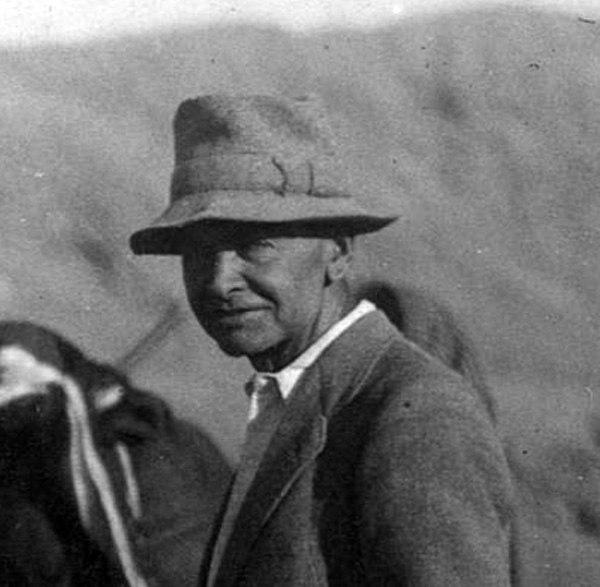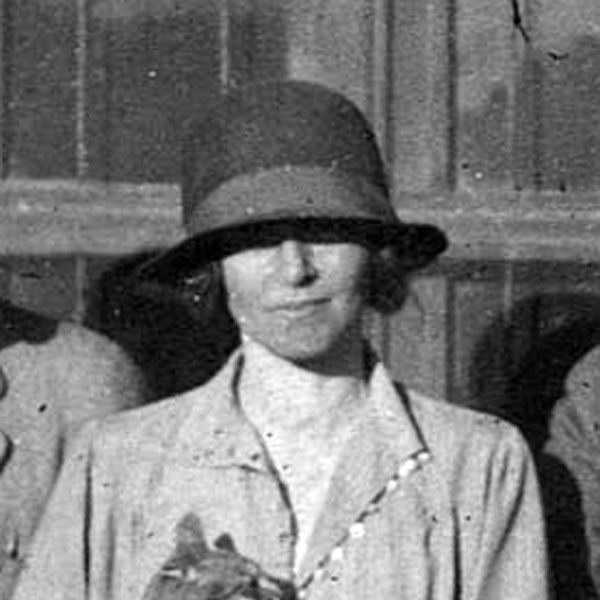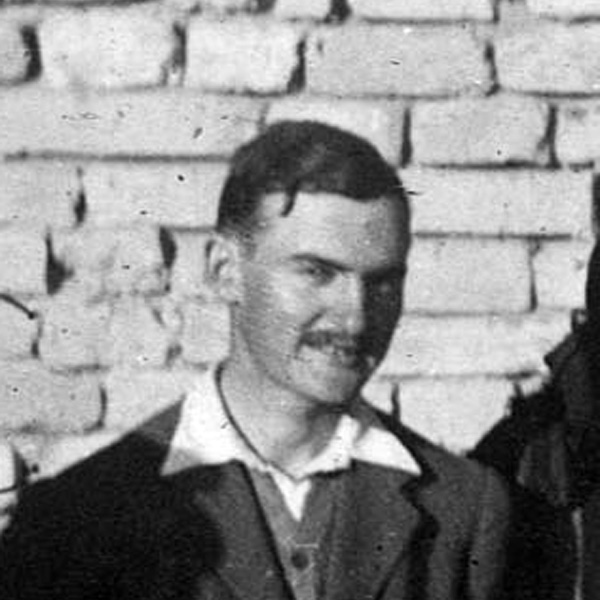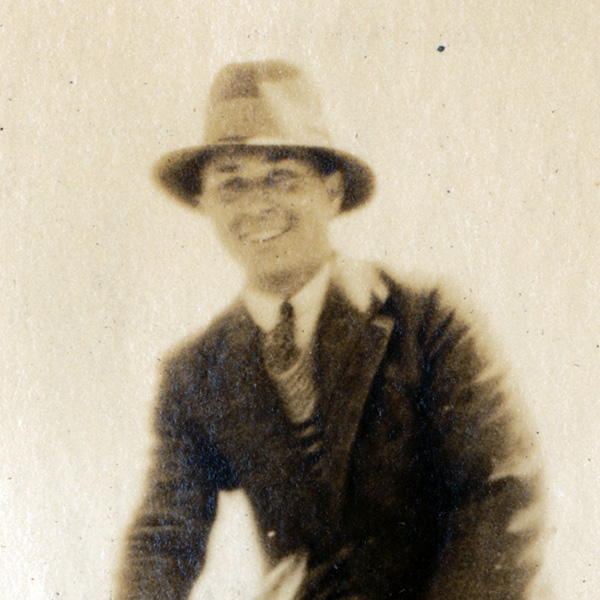Cast of Characters
Cast of Characters
Charles Leonard Woolley (1880–1960)

Leonard Woolley was the third of eleven children of a Church of England clergyman, George Herbert Woolley, and his wife Sarah. He attended St John’s School, Leatherhead, in Surrey, and New College, University of Oxford, where he studied Classics and theology. It was the warden of New College, W.A. Spooner, who advised him to take up archaeology after graduation. In 1905 Woolley was appointed assistant to Arthur Evans, Keeper of the Ashmolean Museum, in Oxford.
Woolley’s early career took him to Nubia in 1907–11, and after that he went as director of the Carchemish expedition sponsored by the British Museum. One of his assistants was T.E. Lawrence (better known as “Lawrence of Arabia”). Woolley and Lawrence collaborated in assisting the Palestine Exploration Fund in its program of making a definitive map of the Holy Land. This work was published in 1915 as The Wilderness of Zin.
After the outbreak of the First World War in 1914, Woolley was posted to Cairo where he acted as an intelligence officer. He was promoted to the rank of major in 1916 before being captured by the Turks and imprisoned at Kastamonu. He tried to return to Carchemish after the War but the political situation was too unsettled. In 1921, he excavated at Tell el-Amarna in Egypt with T.E. Peet, sponsored by the Egypt Exploration Society.
In 1922, Woolley was made director of the joint expedition at Ur funded by the British Museum and the Penn Museum. It is with this site that his name will always be associated. He spent twelve seasons at Ur, until 1934. Within two years of his arrival, Gertrude Bell had established the Iraq Museum in Baghdad which had a statutory right to first choice of all objects excavated. So rich were the finds from the site, however, especially from the Royal Cemetery, that when they were divided—in the custom of the time of the “partage” system—between the host country and the excavation’s sponsoring institutions, both the British Museum and the Penn Museum were also assigned fabulous objects from Ur for their collections.
Woolley’s strengths were his painstaking approach to excavation; for example, excavation of the Royal Cemetery was delayed until he believed his local workforce was sufficiently well-trained to tackle the intricate disclosure of these opulent tombs. He also monitored and instructed his own staff, in particular Max Mallowan who early on acquired the habit of keeping careful field notes, making drawings, preparing monthly reports for sponsors, and most important, publishing in full each season’s work and finds as soon as possible after the season’s end. Woolley had a way with words and both his non-specialist books and lantern slide lectures were very popular with the public. His weakness was a familiarity with the Old Testament which led to unfounded connections between it and the work in hand; for example, his belief that Ur was the birthplace of Abraham. Woolley also believed he had found evidence of The Flood.
After Ur, Woolley moved to Tell Atchana in northern Syria, digging there before the Second World War in 1937–39, and after it, from 1946¬–49. He was knighted for his services to archaeology in 1935. During the War, Woolley worked for the Military Intelligence Directorate to assess and protect art and museum collections throughout Europe. He reported to Winston Churchill personally. In this work he was most ably assisted by his wife Katharine.
After Katharine’s death and the end of his active archaeological career at Atchana, Woolley retired to Ashford in Kent. After an unsuccessful relationship, he retired to Dorset where he was looked after by a devoted housekeeper and her husband, thus enabling him to write up his archaeological work.
Katharine Elizabeth Menke (1888–1945)

Katharine Menke was born in Birmingham to German parents. Her father, Carl Menke, was a well-to-do general merchant who later became the German and Swiss Consul in Birmingham. Katharine attended a grammar school in Birmingham and then went up to Somerville College, Oxford, to read Modern History, but ill health forced her to leave before she had taken her degree. Despite difficulties with her German parentage, she joined the Red Cross in 1915 and was shortly posted to Alexandria where she worked in one of the large field hospitals. At the end of the First World War, she went to Poland to a former concentration camp housing some 7,000 Bolshevik troops being detained in terrible conditions. Menke returned to London in 1919 when she met her first husband, Bertram Francis Eardley Keeling OBE, MC, RE. They married in March 1919. In September 1919, shortly after their arrival in Cairo where Keeling was Director-General of the Survey of Egypt and President of the Cotton Research Board, her husband committed suicide.
Katharine Keeling traveled to Baghdad in 1924 with a letter of introduction to Gertrude Bell. She was staying with Lt.Col. J.R. Tainsh, Director of the Iraq State Railways, and his wife. They had taken Katharine to see the excavations at Ur, where she impressed Leonard Woolley with her ability to draw accurately some of the objects emerging from the excavations. Mainly because of this, but also because Woolley had succumbed to her undoubted charm of manner and appearance, he invited her to make a long stay during 1925, and then offered her a post as volunteer at Ur. Her official period as artist to the expedition began in the spring of 1926 when Mallowan helped extend the expedition house at Ur to include a bathroom for her use. The first mention of a payment to “K.K.” for £51.172.3d appears on the accounts at the end of the 1925/1926 season. She continued until the excavations closed in 1934.
Katharine married Woolley in April 1927, mainly because Byron Gordon, the Director of the University of Pennsylvania Museum at Philadelphia insisted that a situation in which a single woman was living in the expedition house with single men was untenable. A letter from Woolley to a legal representative in 1928 makes it clear that the marriage remained unconsummated but its threat to seek divorce from Katharine was never implemented. The Woolleys remained married and there is no doubt that Katharine’s contributions to Woolley’s excavations greatly enhanced his career.
During the Second World War, Woolley worked closely with Winston Churchill and the Military Intelligence Directorate to monitor Nazi looting of European museums, art collections and royal archives. In this work, Katharine supplied invaluable assistance. Churchill had the Woolleys moved to the Dorchester Hotel in Park Lane in October 1943, and it was there, in November 1945 that Katharine died. Her death certificate put multiple sclerosis (from which she had suffered for over a decade) as the cause of her death.
Max Edgar Lucien Mallowan (1904–1978)

Max Mallowan was engaged as junior field archaeologist at Ur by Leonard Woolley between 1925 and 1931. He had just graduated from Oxford with a degree in Classical Greats but with no idea of a future career. A chance encounter led to his interview with Woolley at the British Museum, and his subsequent appointment.
Ever careful not to squander funds, Woolley organised a free passage for his young assistant as a seaman on an oil tanker sailing from London to Port Said. At Beirut, Mallowan met Algy Whitburn and the two travelled together overland to Ur Junction where they met Woolley at the somewhat sparse expedition house. Woolley made it abundantly clear that they were there to work and he himself set a punishing schedule. The young men were expected to be on site half an hour after sunrise and to work until well after dinner writing up the day’s finds.
Mallowan was lucky to have Woolley as his mentor. Not only did he instruct Mallowan in the rudiments of archaeology, but he also impressed upon him the importance of keeping precise daily field notes of all work going on, and also the necessity to publish that work, and especially any particularly interesting finds in order to inspire future sponsors. Woolley also insisted that Mallowan learn Arabic so that he could communicate with the workforce, which numbered between 200 and 250 men. That first season, Mallowan also kept the pay book, acted as untrained medical assistant, showed visitors round the site, and helped to build a new wing on to the expedition house. This extension was for the benefit of Katharine Keeling, an unpaid volunteer whom Woolley had engaged to do all the drawing of objects found on the site, and to whom Woolley was singularly attached.
Mallowan resigned from his role at Ur after his marriage to Agatha Christie in 1930, because Katharine Woolley (she had married Woolley in 1927) insisted that there was room for only one woman at Ur. After Ur, Mallowan dug for one season at Nineveh with Reginald Campbell-Thompson, and thereafter conducted his own digs. In the years leading up to the Second World War, he excavated at Arpachiyah, Chagar Bazar and Tell Brak, as well as conducting a survey of the Khabur Valley. After the War, as Professor of Western Asiatic Archaeology at the Institute of Archaeology, he excavated at Nimrud (1949–1957) before handing over to David Oates. After Agatha Christie’s death in 1976 he married Barbara Parker, his epigraphist at Nimrud.
Sheikh Mohammad bin Hoja Hamoudi

Little is known about Hamoudi’s origins. Even his dates of birth and death are unknown. He is first known from the Carchemish excavations directed by Woolley before the First World War, where he was in charge of organising and controlling the expedition workforce. Hamoudi also made himself indispensable in other ways, including administering medicine, and is credited with saving the life of T.E. Lawrence, who was working at Carchemish as an assistant to Woolley, when he contracted typhoid fever. In June 1913, Lawrence and Woolley took Hamoudi to England, and they visited Oxford. The visit left a deep impression on Hamoudi.
In 1914, Woolley and Lawrence shut down the site at Carchemish and both men were soon involved in military concerns. Woolley returned to Carchemish in 1919–20, but was unable to resume excavation because of the political situation.
When Woolley was appointed Director of the joint British Museum/University of Pennsylvania Museum expedition to Ur in 1922, Hamoudi was appointed foreman. Described then as an elderly man, he brought with him two sons who worked under their father in organising the workforce. There are several photographs of Hamoudi at Ur, including some which show him in the same line as the Woolleys and the rest of the team. He was clearly a much-valued member of that team. At the start of every season, he would meet Woolley in Baghdad to discuss the ordering of stores of food and excavation essentials, then arrange for their transport to Ur. He also took instructions about work to be carried out to the expedition house before Woolley and his wife arrived.
Max Mallowan frequently mentioned Hamoudi in a diary kept during 1925 and 1926. In October 1926 he reports buying presents (“sundry decorative articles”) in Paris on his way to Ur for Hamoudi and his (by then) three sons working at Ur: Yahia, Ibrahim and Isa. Undergoing an emotional crisis after the death of one of his closest friends, Mallowan “went to talk things over with Hamoudi, that tower of philosophy”.
Hamoudi went on to be part of Mallowan’s digs in northern Syria at Chagar Bazar and Tell Brak. Agatha (Christie) related how he and two of his sons reported for duty at 5 a.m. while the Mallowans were still fast asleep in their hotel room. In 1949, when Mallowan was about to begin excavating at Nimrud, he found that Hamoudi had been awarded the King’s Medal for Service in the Cause of Freedom (KMS) for his services to British interests during the War. How long after this Hamoudi died is not recorded.
Katharine Woolley made a bronze head of Hamoudi, which was once in the collection of the Horniman Museum, but the Museum does not have it now, and there are no accounts of what happened to it. It was much admired at the time and considered to have been a good likeness.
Algernon Stuart Whitburn (1895–1984)

Algernon (known as Algy) Whitburn worked as archaeological architect at Ur from 1925 to 1930. He had enlisted in the Surrey Yeomanry at the start of the First World War, and was gazetted a Second Lieutenant in June 1915. Badly wounded at Vimy Ridge in 1916, Whitburn spent two years in hospital, and thereafter walked with a limp. After the War, he resumed his training as an architect. He was recommended to Woolley by the head of the firm for which he worked, who was a friend of Woolley’s. Whitburn replaced F.G. Newton, who had been the first archaeological architect at Ur from 1922. He began work at Ur at the same time as Max Mallowan and the two men became lifelong friends. There is a copy of a letter from Mallowan to Whitburn telling him of his marriage to Agatha Christie in 1930 before it became public knowledge.
Despite his injury, which caused him much discomfort, Whitburn had a great sense of humour and a store of funny stories. Woolley described him in a letter to Sir Frederic Kenyon, the Chairman of the Trustees at the British Museum, as “…irrepressibly talkative, amazingly self-centred, very good-hearted with a somewhat vulgar manner … I like him and his work is really valuable”. There are in the Ur archive a number of photographs of Algy Whitburn, often striking a pose or playing a joke on other members of the expedition. There is a Christmas card to Whitburn written by Katharine Woolley in 1927 and also a poem written by her on receipt of a box of marrons glacés sent by Whitburn for Christmas 1928 concluding with the stanza:
“But we finished the marrons and voted them fine
And drank Whitburn’s health in a bottle of wine
Which the exiles agreed without any demur
Was no more than his due who sent marrons to UR.”